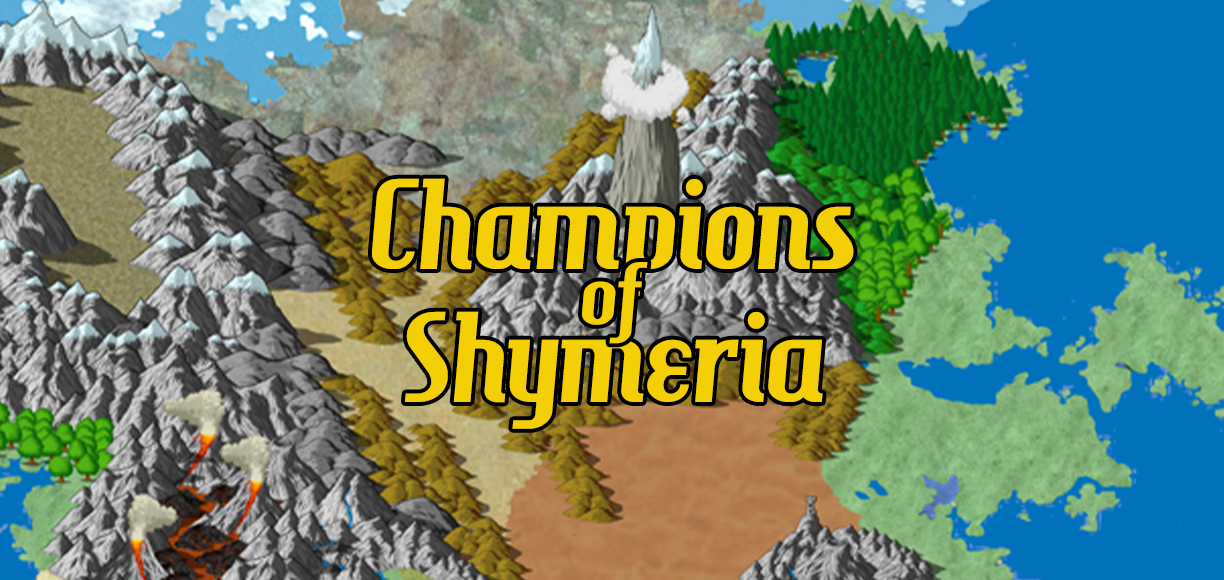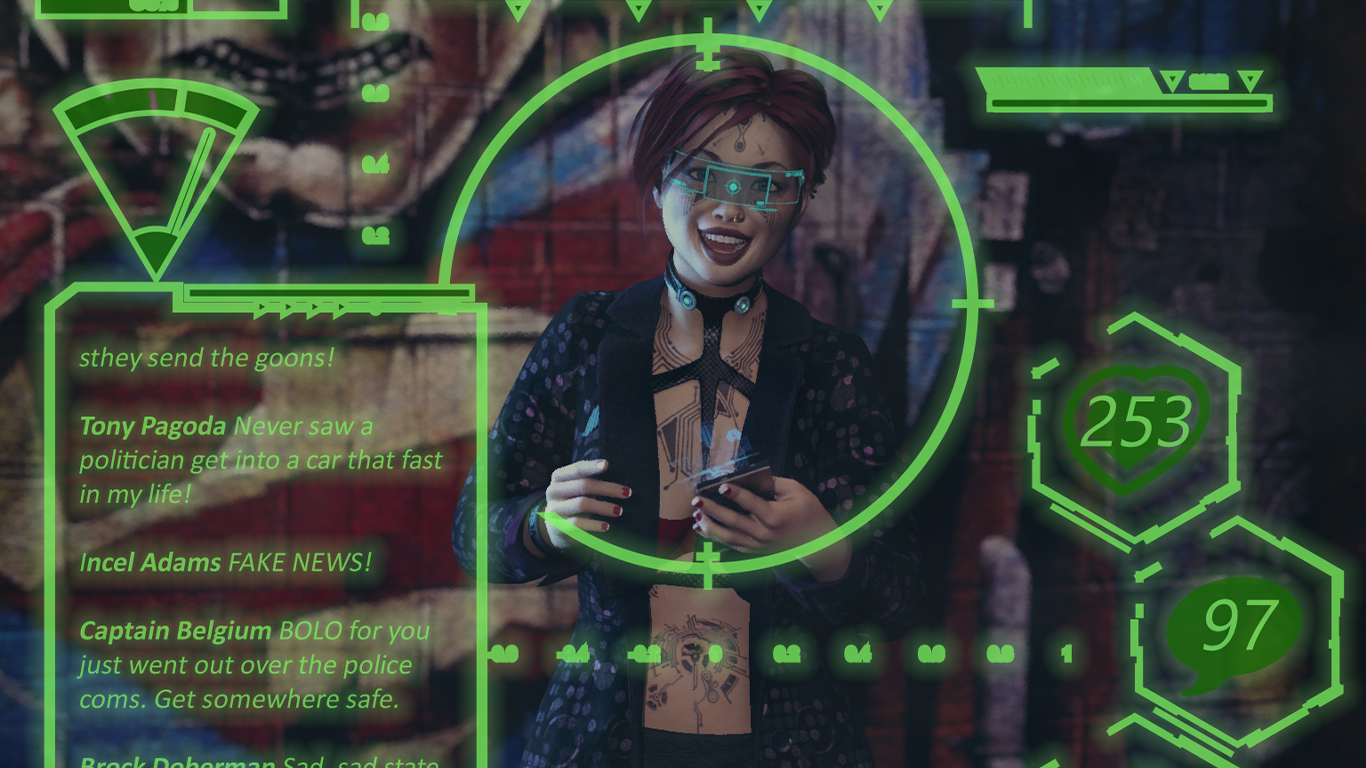We may earn money or products from the companies mentioned in this post.
Since the whole idea behind Cinemechanix is that you use the core rules to create the kind of game you want to play, it seems like it might be a good idea to go through a sample campaign design. I keep going back and forth on whether I want to continue the Sample of Play Theater examples in the book beyond the rules section, in part because eventually things boil down to the GM figuring things out. Unless I want to write awkward monologues, the whole script/play format breaks down and framing everything with “and then Bianca decides…” gets tedious fast (I know, I tried it in So You’ve Decided To Run A Role-Playing Game). So for now, instead of trying to figure out if/how to include a detailed design example in the rulebook, I’m going to do it here and see if it turns into anything useful. Since I still need to write the Elevator Pitch for Guardians of Shymeria, the game used in the SOPT examples in the books, I can kill two birds with one stone. Or kill one bird and just leave the other here because it’s unpublishable. Whichever ends up working.
The first step in designing a game is coming up with a premise. The initial premise for Guardians of Shymeria came from frequent Hex writer/artist Joshua LH Burnett (of Leopard Women of Venus fame). Years ago, he proposed a QAGS game based on He-Man style cartoons from the 80s. The hook was that your character’s Gimmick (as in the QAGS stat) had to be based on the action figure gimmick (as in the special whatever that made kids want to buy the toy). So Ram Man’s Gimmick would be “Spring-loaded Legs” or whatever. Josh got some writing done on the game, but eventually lost interest and moved on to other things. Some time later, Leighton and I decided we needed to to more games like Laser Ponies and got Josh’s blessing to maybe steal the basic idea of the He-Man game at some point in the future. That didn’t happen either, at least until I decided that it would make a good sample game for Cinemechanix.
Josh’s initial idea was (I think) going to be a straightforward He-Man “homage,” but I was a more casual fan (I watched the cartoon, but didn’t have any of the action figures) and there are a lot of other things I like that are He-Man adjacent enough to cram in, so I decided to start fresh with just the action figure Gimmick thing and see what I came up with. The first round of refinement of the “He-Man Gimmick and other things I like” premise came while I was writing the first Sample of Play Theater. I’m going to just cut and paste that. Basically, Bianca is me brainstorming the game and all the other characters are me second-guessing myself.
Bianca: Ok guys, I’ve got a lot of ideas floating around in my head for a fantasy game, but it’s kind of a mixture of different things and I haven’t entirely worked out how they fit together, so I’m not exactly sure where to start.
Jesse: Start with the simplest you can boil it down to and we’ll go from there.
Bianca: 80s science fantasy cartoon meets high fantasy as imagined by Frank Frazetta and Ralph Bakshi.
Zoe: Who?
Luke: Frazetta’s an artist, Bakshi does animation. Have you ever seen Heavy Metal?
Zoe: The one with the big green orb? Yeah, I liked that.
Luke: [handing over his tablet] Well, I don’t know if either of them actually had anything to do with Heavy Metal, but they’re both Heavy Metal-adjacent. Here’s an image search of some Frazetta stuff you can scroll through, and I’ve got a DVD of Bakshi’s movie Wizards that you can borrow if you want.
Zoe: [scrolling through images] Hey, I’ve seen some of these before! That’s Conan, and I’ve seen this one on some metal CD my brother used to have. So kind of dark fantasy?
Bianca: Kind of. I want the part of the world controlled by evil to be grimdark as hell, and I want all of the action to have that kind of “riding into battle on my dragon while ‘Immigrant Song’ plays in the background” epic feel, but I also want there to be a good kingdom that’s almost Saturday Morning Cartoon light and sunshine, with a wise and beloved ruler and prosperity and shiny happy peasants holding hands.
Jesse: Ok, so is the stark contrast between good and evil where the high fantasy comes in, or were you thinking more elves and dwarves and dragons?
Bianca: No. Well, maybe dragons, but the characters are straight from 80s cartoons, with weird powers that can be turned into gimmicks to sell toys. The high fantasy stuff is story backdrop. I don’t want a story about the heroes foiling Skeletor’s evil scheme every week, I want a story that builds toward all-out war between good and evil, with earth-shattering battles and cities in ruins and whole new wastelands created.
Sparky: Can my guy come with slime?
Everyone: What?
Sparky: My toy gimmick. I want a character that comes with slime.
Bianca: Why not? Actually, doing character creation in action figure terms might be a good idea. Every character could have a toy gimmick and a piece of equipment that comes with the toy.
Jesse: You said you want to build toward all-out wars. How far in does the game start? Are the characters marching off to meet the evil armies, or are we still safe and secure in our Hobbit holes?
Bianca: Somewhere in between. There’s been an uneasy peace for generations, so there aren’t even any real rumors of war yet, but the PCs are heroes of the kingdom.
Sparky: What are we heroes for? If there hasn’t been a war with the evil empire lately and the kingdom is all sunshine and rainbows, it doesn’t sound like there’s much hero-ing to do. Is “hero of the kingdom” a hereditary title or is there a prophecy or something?
Bianca: Good point. I think the PCs should be heroes who have been tested, but you’re right that there needs to be some kind of conflict for that to happen. How about this? There’s a big no-man’s land between the two kingdoms that was decimated in the last war. There’s powerful magic and sci-tech buried in the destroyed cities, so there are always agents from both sides as well as scavengers out there looking for useful artifacts. There are also monsters and mutants lurking there that occasionally raid the edges of the kingdom and need to be hunted down. So let’s say that the PCs are part of whoever does that kind of thing. Maybe a knighthood?
So yeah, kind of contrived and there are a few outright lies there for the sake of providing a good game example (I knew about the toy gimmick going in, but making it seem like Sparky’s idea better illustrates the design goals of Cinemechanix), but it gets the basic point across and gives us a starting point.
For most games, the standard seems to be for the GM to come to the table with a reasonably (and sometimes extensively) fleshed-out idea and the players to build characters that fit in with whatever the GM gives them. In my experience, though, the best games are ones like in the example where the GM has only a vague concept and the players help build it up. It gives everyone a sense of ownership and generates a wider mix of ideas than the GM is likely to come up with on her own.
The next Sample of Play Theater in the book moves directly into character creation without any attempt to pin down the Ficton in more detail, and in my experience that’s the best way to go about it. Character creation will answer some of the questions left unanswered in the initial brainstorming session, raise some new questions, and give you a good idea of what kinds of things you’ll need to focus on for the game you’ll actually be playing. You don’t necessarily have to fully create the characters–in fact, you may not be able to if your game will need “crunchier” character creation rules–but you need to have a good idea of who the PCs are, what they’re doing, and how they fit into the game world and the group. Once you’ve got that, you can start defining your ficton in more detail. We’ll get to that next week.







